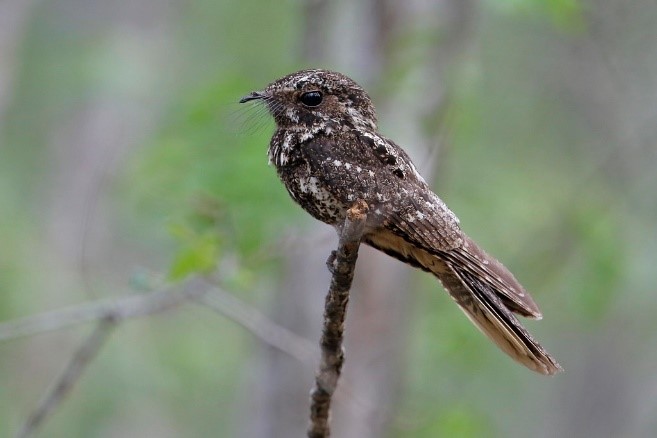Birdfinding.info ⇒ An uncommon, local, and little-known Hispaniolan endemic that is most readily observed in the mixed forest zone of Alcoa Road, where several males can often be heard calling at once. Also frequently heard along the road up to Zapotén, particularly in the stretch above La Placa, but limited access and denser habitat make observation more difficult there than on Alcoa Road. Other sites where it can sometimes be found include the Rabo de Gato Trail and a few locations in the Cordillera Central, including Valle Nuevo National Park.
Hispaniolan Nightjar
Antrostomus ekmani
Endemic to Hispaniola, where it occurs mainly in deciduous woodlands in foothills of the Sierra de Bahoruco and Cordillera Central, north at least to the Loma de Cabrera and Valverde. It has also been found in several interior valleys in central Haiti.
Has been reported from the northern and eastern coastal lowlands of the D.R., but most such reports are from areas that would be atypical habitat and these generally appear more likely to refer to wintering Chuck-will’s-widows.
Identification
A medium-large, typically blackish-brown nightjar with an extensively white or cream-colored undertail, pale-gray shoulder straps, and a “vest” of white spots on the breast.
Male’s uppertail has bold white corner patches. Female’s uppertail has buffy corners.
Much larger than Hispaniola’s other resident nightjar, the Least Pauraque, but readily confused with wintering Chuck-will’s-widow (see below).
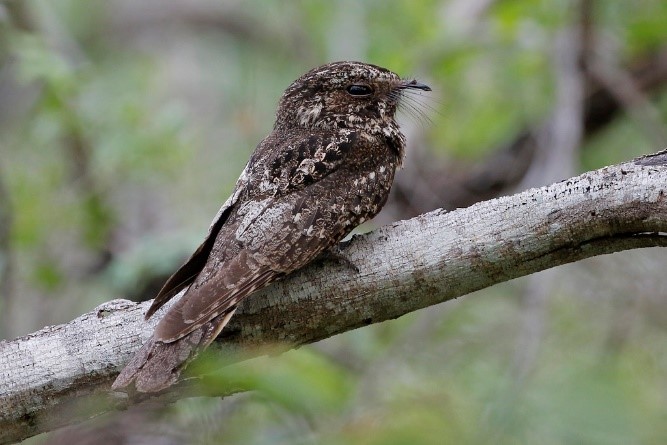
Hispaniolan Nightjar, female with tail closed. (Cordillera Central, Dominican Republic; May 16, 2019.) © Dax M. Román E.
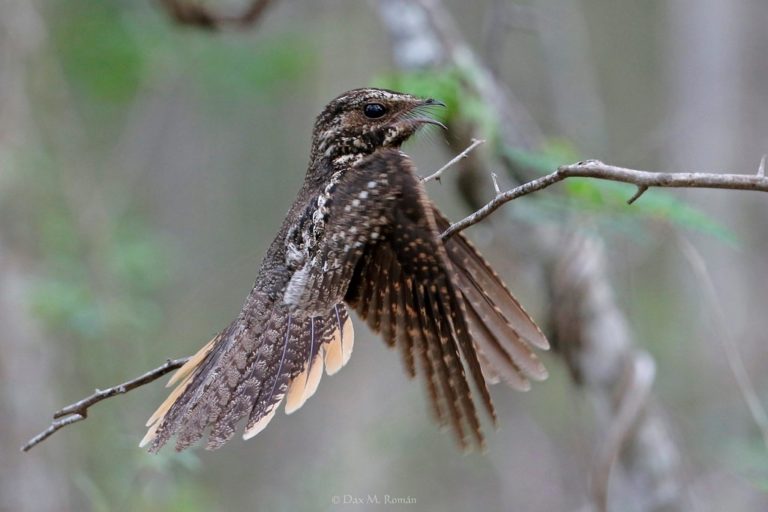
Hispaniolan Nightjar, female with tail spread, showing extensive buffy corners on uppertail. (Dominican Republic; May 16, 2019.) © Dax M. Román E.
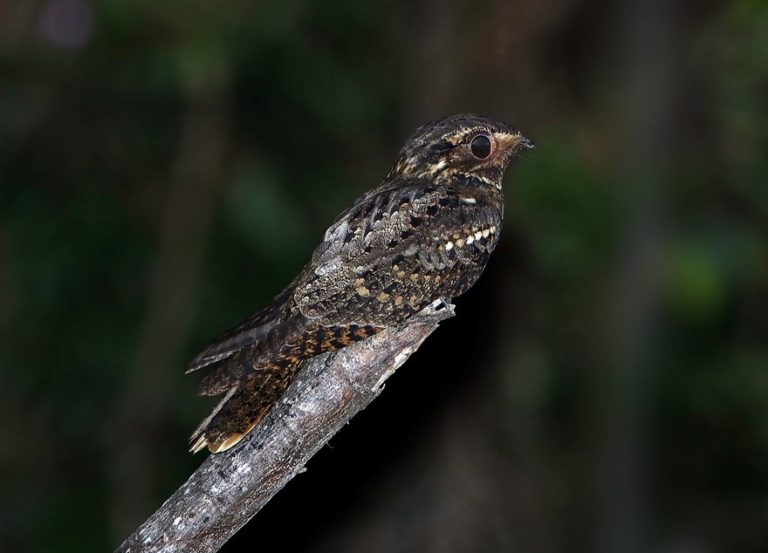
Hispaniolan Nightjar, female showing narrow buffy corners on uppertail when folded. (Sierra de Bahoruco, Dominican Republic; December 14, 2014.) © Dax M. Román E.
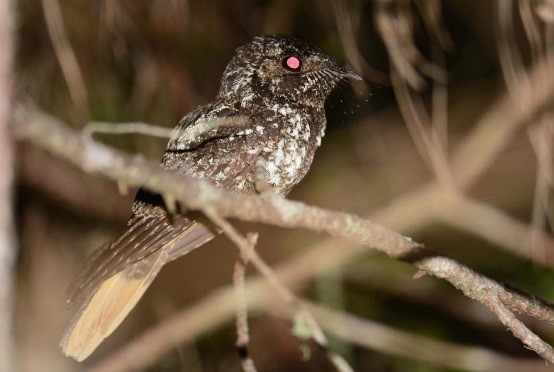
Hispaniolan Nightjar, female showing white spots on breast and uniformly buffy undertail. (Alcoa Road, Dominican Republic; May 15, 2014.) © Paul Noakes

Hispaniolan Nightjar. (Puerto Escondido, Dominican Republic; November 29, 2011.) © Miguel A. Landestoy T.
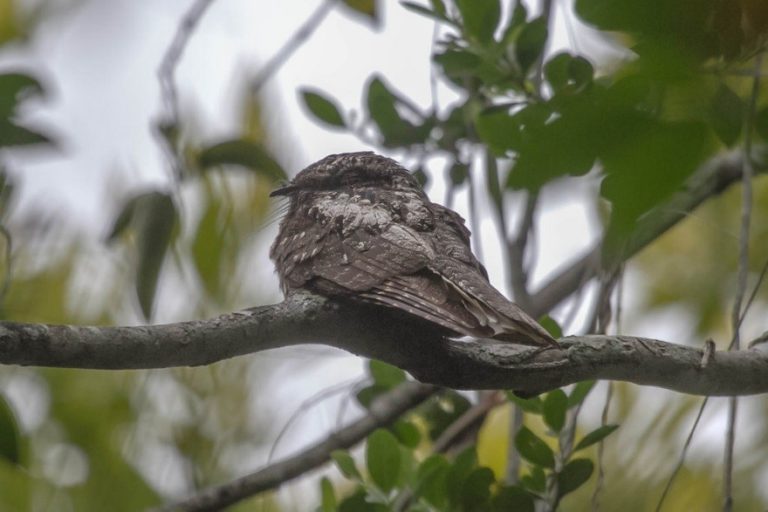
Hispaniolan Nightjar, showing dark brown upperparts with pale-gray shoulder braces. (Dominican Republic; May 5, 2014.) © Sandra Miranda Gonzalez
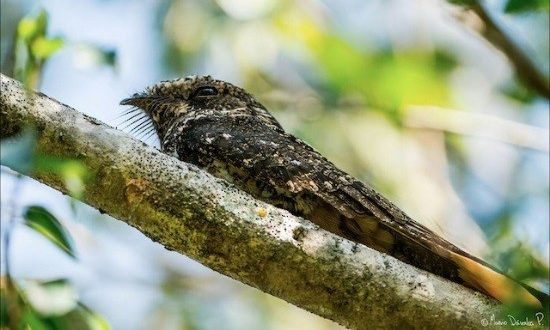
Hispaniolan Nightjar, showing mostly pale undertail. (La Placa, Dominican Republic; September 16, 2012.) © Mario Dávalos
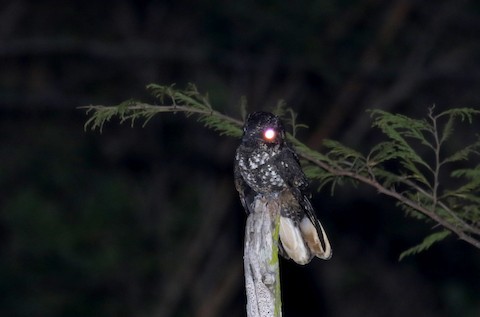
Hispaniolan Nightjar, male showing white spots on breast and uniformly white undertail. (Puerto Escondido, Dominican Republic; January 21, 2019.) © Jay McGowan
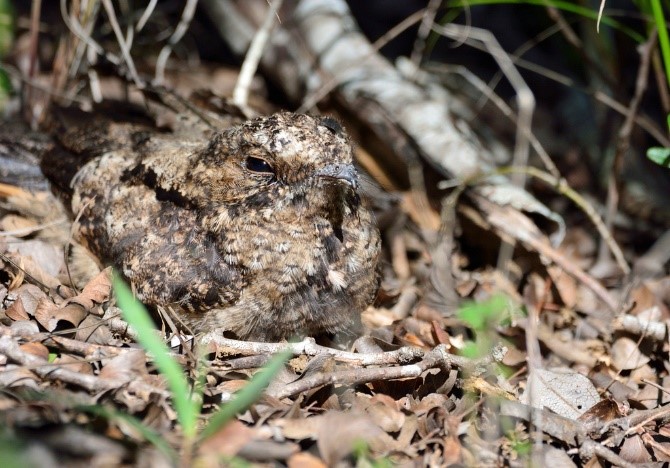
Hispaniolan Nightjar, possibly a juvenile; well camouflaged and a much paler, warmer shade of brown overall than most adults. (Valverde, Dominican Republic; June 1, 2019.) © Freddy Ruíz
Below are three views of the type-specimen of Hispaniolan Nightjar, collected in Haiti in 1928.
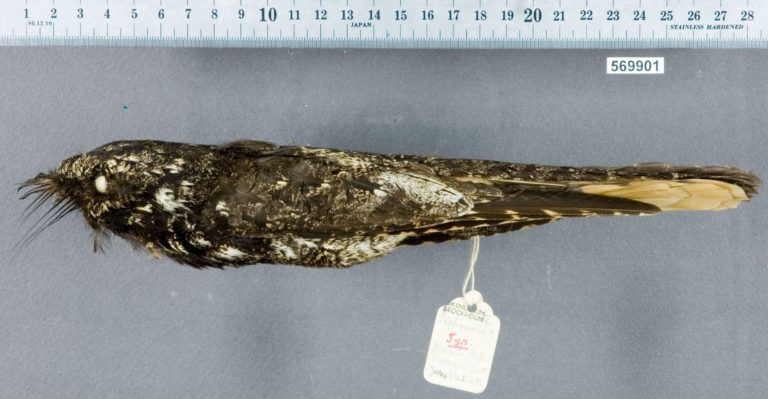
Hispaniolan Nightjar, female, side view. (Collected at Jérémie, Haiti; June 1928.) © NRM Magnus Jäderblad

Hispaniolan Nightjar, female, dorsal view. (Collected at Jérémie, Haiti; June 1928.) © NRM Magnus Jäderblad
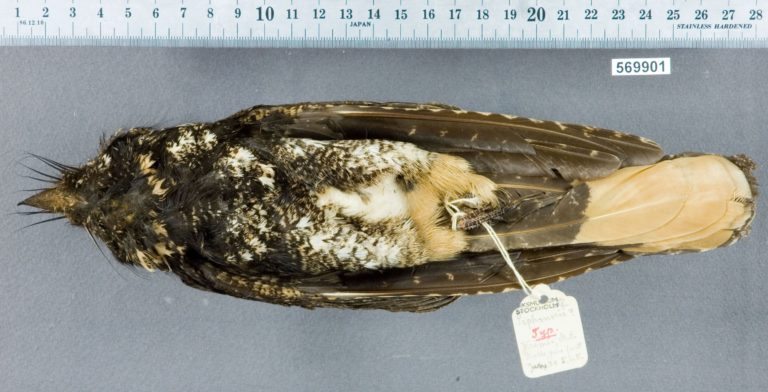
Hispaniolan Nightjar, female, ventral view. (Collected at Jérémie, Haiti; June 1928.) © NRM Magnus Jäderblad
Voice. Distinctive song is a liquid, bisyllabic trill that starts on an even tone, then rises emphatically; often repeated many times in rapid succession:
Cf. Chuck-will’s-widow. From September to May, Hispaniolan Nightjar shares its range with non-breeding Chuck-will’s-widow, which is very similar but somewhat larger and usually a paler, warmer shade of brown overall. Hispaniolan can be recognized by its more uniformly pale undertail and the bold white spotting on its breast.
Male Hispaniolan can also be identified by the bold white corner patches on its uppertail, whereas male Chuck-will’s-widow has white only on the inner webs of its outer tail feathers—so its uppertail looks either unmarked (when closed) or partly striped (when spread). Females of the two species can be extremely similar, as both have buffy tips on their outer tail feathers.
Notes
Monotypic species. Formerly considered conspecific with Cuban Nightjar, together known as the Greater Antillean Nightjar (A. cubanensis), but they differ noticeably in vocalizations and tail pattern.
References
BirdLife International. 2016. Antrostomus ekmani. The IUCN Red List of Threatened Species 2016: e.T22729176A95008829. http://dx.doi.org/10.2305/IUCN.UK.2016-3.RLTS.T22729176A95008829.en. (Accessed June 16, 2019.)
Cleere, N. 2019. Hispaniolan Nightjar (Antrostomus ekmani). In Handbook of the Birds of the World Alive (J. del Hoyo, A. Elliott, J. Sargatal, D.A. Christie, and E. de Juana, eds.). Lynx Edicions, Barcelona. https://www.hbw.com/node/55188. (Accessed June 16, 2019.)
Cleere, N., and D. Nurney. 1998. Nightjars: A Guide to Nightjars and Related Nightbirds. Pica Press, Sussex.
eBird. 2019. eBird: An online database of bird distribution and abundance. Cornell Lab of Ornithology, Ithaca, N.Y. http://www.ebird.org. (Accessed June 16, 2019.)
Holyoak, D.T. 2001. Nightjars and Their Allies. Oxford University Press.
Latta, S., C. Rimmer, A. Keith, J. Wiley, H. Raffaele, K. McFarland, and E. Fernandez. 2006. Birds of the Dominican Republic and Haiti. Princeton University Press, Princeton, N.J.
Raffaele, H., J. Wiley, O. Garrido, A. Keith, and J. Raffaele. 1998. A Guide to the Birds of the West Indies. Princeton University Press, Princeton, N.J.
Weber, D. 2014. Greater Antillean Nightjar (Antrostomus cubanensis), version 1.0. In Neotropical Birds Online (T.S. Schulenberg, ed.). Cornell Lab of Ornithology, Ithaca, N.Y. https://doi.org/10.2173/nb.granig1.01.
